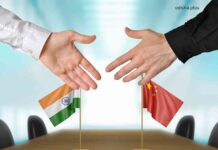Sutanu Guru
If you interpret the meanings of words strictly according to the dictionary, poverty eradication has undoubtedly failed in India. A more accurate way to ask the questions would be: to what extent has India succeeded in reducing poverty? Poverty has not been “eradicated” by any major country in the world.

Perhaps oil rich Brunei with a population of 4.45 lakh may not have poor citizens. But the author suspects even tiny Brunei would have poor citizens who have fallen through the cracks. According to estimates of the World Bank, some 10% of Indians continue to subsist and survive below the poverty threshold. That is 140 million people, more than the combined population of England and France, the sixth and seventh largest economies in the world after India which is at number five.

If you go by estimates of multi-dimensional poverty made by Niti Aayog, 25% of Indians live below the poverty threshold. That works out to 350 million, more than the combined population of England, France, Germany, Italy, Spain, Norway, Denmark and Sweden.
Numbers and comparisons like these are often bandied about by left leaning academics and intellectuals the fruits of economic liberalisation haven’t reached the poor who continue to wallow in deprived livelihoods. For instance, they point out that a mere 1% of Indians account for 45% of air traffic; just 8% of the entire population owns a car, and so on, and on…
Data is very powerful, and it can be used in myriad ways: to seek the real picture and also to indulge in a bit of good old fashioned propaganda. When left leaning intellectuals use accurate data to come to the conclusion that poverty has not really come down in India, they are neither seeking nor portraying the real picture but succumbing to polemics and ideological rhetoric. Not even a fool would dispute the fact that an unacceptably large number of Indians remain poor. Yet, to sweepingly pronounce verdict and say that economic policies of the last three decades or so haven’t helped the poor is an insult to credible data, which is a revered deity for the author.
We will come to numbers and hard data in a while. Let’s use data in an interesting way. Back in 1983, the elder brother of the author was a class 1 commissioned officer of the Indian Air Force when he purchased his first two-wheeler. The cost, or price was equivalent to five months of his salary. A few months ago, the driver of the author (studies up to class 8th) purchased a two-wheeler. The cost, or price, was equivalent to five months of the salary paid by the author to him. So what was once within the reach of a class 1 gazetted officer of the Government of India is now within the reach of an illiterate driver with no other skills.

Now ask yourselves the simple question: has the quality of life of poor people (represented here by the illiterate driver) improved over the last few decades or not? The driver of the author is not an exception. Most drivers working in large cities own their own two-wheelers. They could not even dream of that one generation ago. In the 1980s, even the purchase of a decent refrigerator and a colour TV needed budgetary callisthenics by the author’s father, a college professor and class 1 officer. This year, the domestic help who washes utensils in the author’s house is thinking of upgrading her fridge and colour TV.
Again, the domestic help is essentially illiterate. The author would like to ask left leaning intellectuals who are far better read and more knowledgeable a simple question: if economic policies of the last three decades or so haven’t really helped the poor, how come tens of millions of domestic help, drivers, delivery boy/girls, beauticians, plumbers, electricians and TV cum AC repair mechanics among others can afford to buy smart phones, colour TVs, refrigerators and and two-wheelers?
Another interesting data comes from the so called zero balance bank savings accounts named Jan Dhan launched in 2014 for the poor. As of March 2023, there were about 50 crore such accounts with about Rs 200000 crores in deposits. That works ot to an average balance of Rs 4,000 per account.

Now let come to the hard numbers. The traditional definition of a poor person as per the World Bank is someone who earns less than $2 a day. Back in 1991, when the duo of prime minister P. V. Narashima Rao and finance minister Manmohan Singh unleashed historic economic reforms, close 50% of Indians were estimated to live below the poverty line. Since the population of India then was inching towards 900 million, one can say that 450 million Indians lived in absolute poverty.
By 2004, the poverty ratio had declined to about 40%. With a total population of about 1.13 billion, India had about 450 million Indians continued to live in absolute poverty. Today, the poverty ratio is barely 10% which means the number of Indians living in absolute poverty has dropped to about 140 million. As mentioned earlier, that is still an unacceptably large number. But surely it is better than 450 million?
As the author was writing this, the domestic help asks if spending money on an Inalsa food processor for her home is worth it. I suggested she talk to left leaning intellectuals.
(Author has been a media professional for over 3 decades. He is now Executive Director, C Voter Foundation. Views are Personal)



























